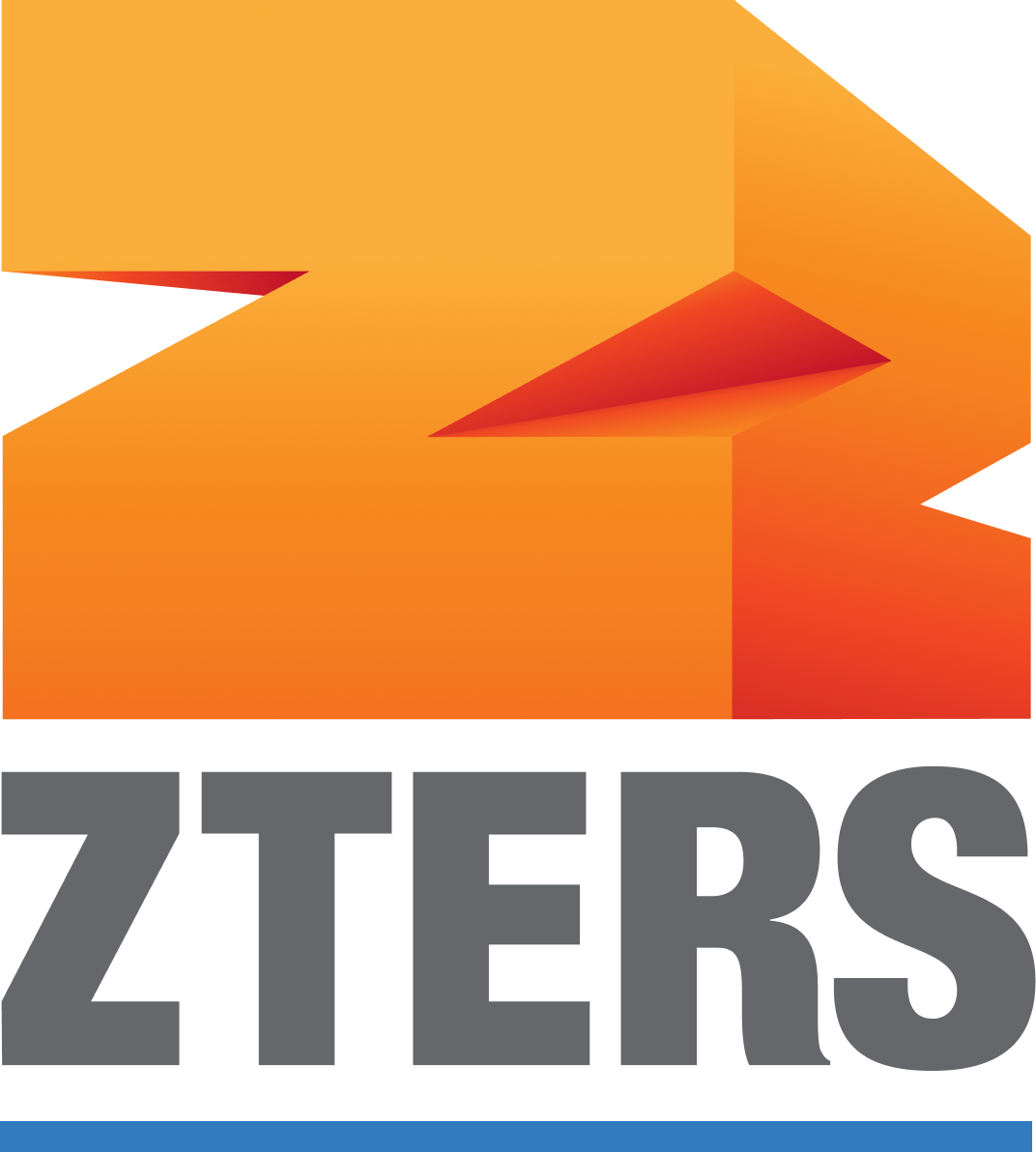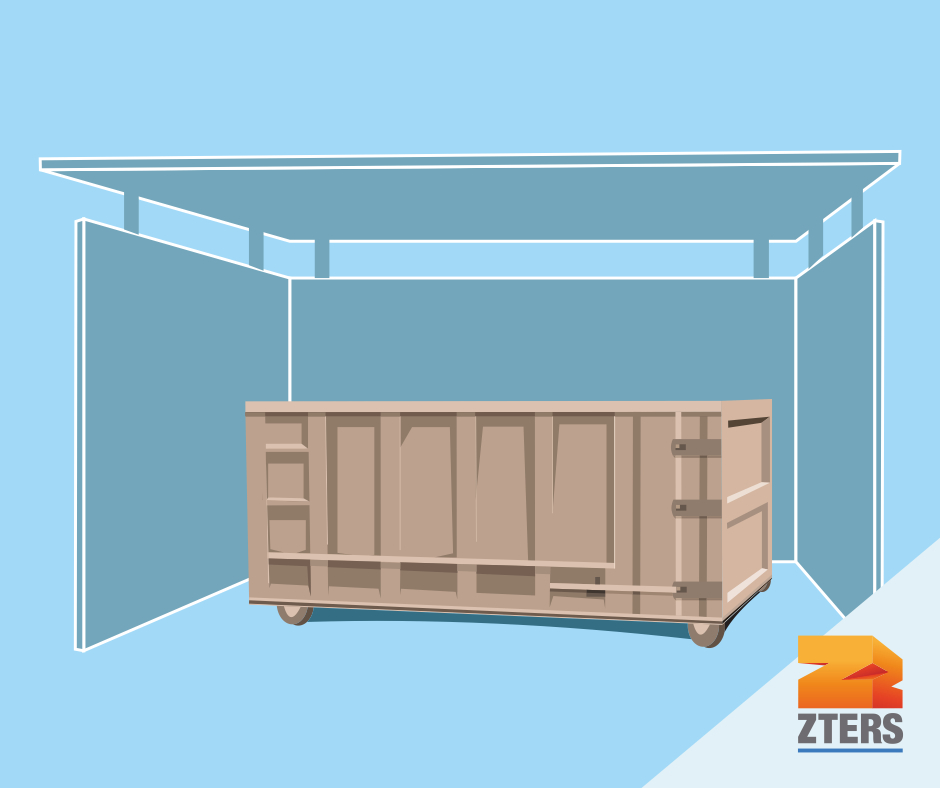Sometimes, renting a dumpster requires more than just placing the dumpster in an easily accessible space. It can also require property managers to determine the best dumpster enclosure option for their needs.
Whether you use apartment complex waste services, manage a commercial property, oversee a public park, or something else, dumpster enclosures can be a practical—and legally required—solution to keeping your roll-off container secure.
Here’s what you should know about dumpster enclosures, dimensions, and factors to consider when identifying the right enclosure to meet your needs. Get in touch with ZTERS for reliable commercial waste management or nationwide dumpster rentals.
What Is a Dumpster Enclosure?
A dumpster enclosure is a fenced or walled structure that surrounds a dumpster to keep waste contained, enhance curb appeal, and comply with local regulations. You’ve likely seen one in the parking lot of a restaurant, outside an apartment complex, near the entrance to a park, or in another area that produces a consistent waste stream.
Dumpster enclosures help prevent unauthorized use, protect against wind-blown debris, and deter pests or illegal dumping. Many businesses and property owners use them to keep their waste management areas neat and organized.
Standard Dumpster Enclosure Dimensions
Dumpster enclosures come in various sizes, typically based on the dumpster size they are designed to house. Here are some common dimensions:
1. Enclosures for 2-Yard and 4-Yard Dumpsters
- Recommended Enclosure Size: 10’ W x 10’ D x 6’ H
- Common Users: Small businesses, restaurants, and retail stores
2. Enclosures for 6-Yard and 8-Yard Dumpsters
- Recommended Enclosure Size: 14’ W x 14’ D x 6’-8’ H
- Common Users: Apartment complexes, office buildings, and hotels
3. Enclosures for Roll-Off Dumpsters (10-Yard to 40-Yard)
- Recommended Enclosure Size: 20’ W x 14’-18’ D x 8’ H
- Common Users: Construction sites, industrial facilities, and large commercial properties
The height of the enclosure typically ranges from 6 to 8 feet, depending on local codes (and visual preferences).
Dumpster Enclosure Material Options
Dumpster enclosures are manufactured with a variety of materials. Each comes with its own benefits and drawbacks, making some more ideal for other environments than others. Here are common dumpster enclosure material options:
- Wood: Affordable and customizable, but requires regular maintenance.
- Metal (Steel or Aluminum): Durable and secure but may rust over time without proper coating.
- Concrete Block or Brick: Sturdy and long-lasting but can be expensive.
- Vinyl or PVC Panels: Low-maintenance and weather-resistant, though less sturdy than metal or concrete.
When deciding on the right dumpster enclosure material for your specific situation, consider the climate, your budget, visual preferences, and local guidelines.
Dumpster Enclosure Gates
Gates allow for easy access while keeping the dumpster secured. Popular gate options include:
- Swing Gates: Common for most enclosures, require clearance to open.
- Sliding Gates: Ideal for tight spaces where swing clearance is limited.
- Bi-Fold Gates: A space-saving option that folds inward.
Dumpster Enclosure Requirements & Regulations
Many municipalities have specific requirements for dumpster enclosures to ensure public safety. This may be separate from securing a dumpster permit so pay special attention to requirements in your area. Local requirements may pertain to:
- Minimum and maximum height restrictions
- Material and design guidelines
- Accessibility for waste collection trucks
- Drainage and ventilation requirements
- Fire safety regulations
Check your local zoning and waste management ordinances in order to prioritize compliance before beginning installation.
As an example, in Houston, regulations for dumpster enclosures (referred to as bulk containers) are outlined in the Code of Ordinances, Chapter 39, Article VI. These regulations aim to maintain public health and safety by ensuring proper storage and screening of waste containers
Benefits of Installing a Dumpster Enclosure
A dumpster enclosure may seem excessive, but there are a number of advantages associated with them.
Enhances Property Aesthetics
A dumpster enclosure helps keep waste areas looking clean and organized, improving the overall appearance of your property. Anyone who has ever lived in an apartment complex with trash pileup can attest to how the visual chaos can negatively impact their living situation.
Improves Security
By enclosing your dumpster, you prevent unauthorized dumping and scavenging. Whether people are tossing illegal or hazardous items or participating in unsafe dumpster diving, it can be bad for property managers. A dumpster enclosure can help reduce liability risks and potential fines.
Need a Dumpster?
Speak with an account manager for a free quote.
Reduces Pest Problems
Enclosures help keep rodents and other pests from accessing waste, minimizing infestations and health concerns. Check out our post on avoiding dumpster pest infestations for more tips.
Complies with Local Regulations
As mentioned before, many municipalities require dumpster enclosures to meet zoning and waste management codes. Be proactive in avoiding fines and other legal issues by familiarizing yourself with and complying with these requirements from the get-go.
Protects Dumpsters from Weather Elements
Enclosures prevent wind-blown debris and shield dumpsters from harsh weather conditions, increasing their lifespan.
How to Choose the Right Dumpster Enclosure
Just as different projects necessitate different dumpsters, different settings call for different dumpster enclosures. Here’s what you should think about when deciding on the right option:
Consider Your Dumpster Size
Ensure the enclosure fits your dumpster with ample room for access and servicing. If you’re looking for guidance on the right dumpster for you, visit our dumpster rental page and/or give ZTERS a call.
Evaluate Available Space
Account for gate clearance and truck access to avoid operational challenges. Keep in mind that if a hauler cannot access your dumpster, you will be met with additional charges.
Choose Durable Materials
Select a material that suits your climate and maintenance preferences for long-lasting performance. It can be tempting to choose the most cost-effective option upfront, but recurring upkeep and potential damage can be more costly in the long run.
Match Visual Appeal
Align the enclosure’s design with your property’s look to maintain visual consistency. This can make a difference in the living experience of your residents, tenants, and other people who occupy the nearby area.
Verify Regulatory Compliance
Check local zoning laws and waste management codes before installation to ensure you meet all legal requirements. When in doubt, ask! It’s better than having your operations stalled or being met with fines.
Need a Dumpster for Your Business? Contact ZTERS!
At ZTERS, we provide reliable dumpster rental and commercial waste management services nationwide. Whether you need a temporary roll-off dumpster for a construction project or an ongoing waste solution for your business, we have the right options for you.
Contact ZTERS today to learn more about our dumpster rental solutions!

